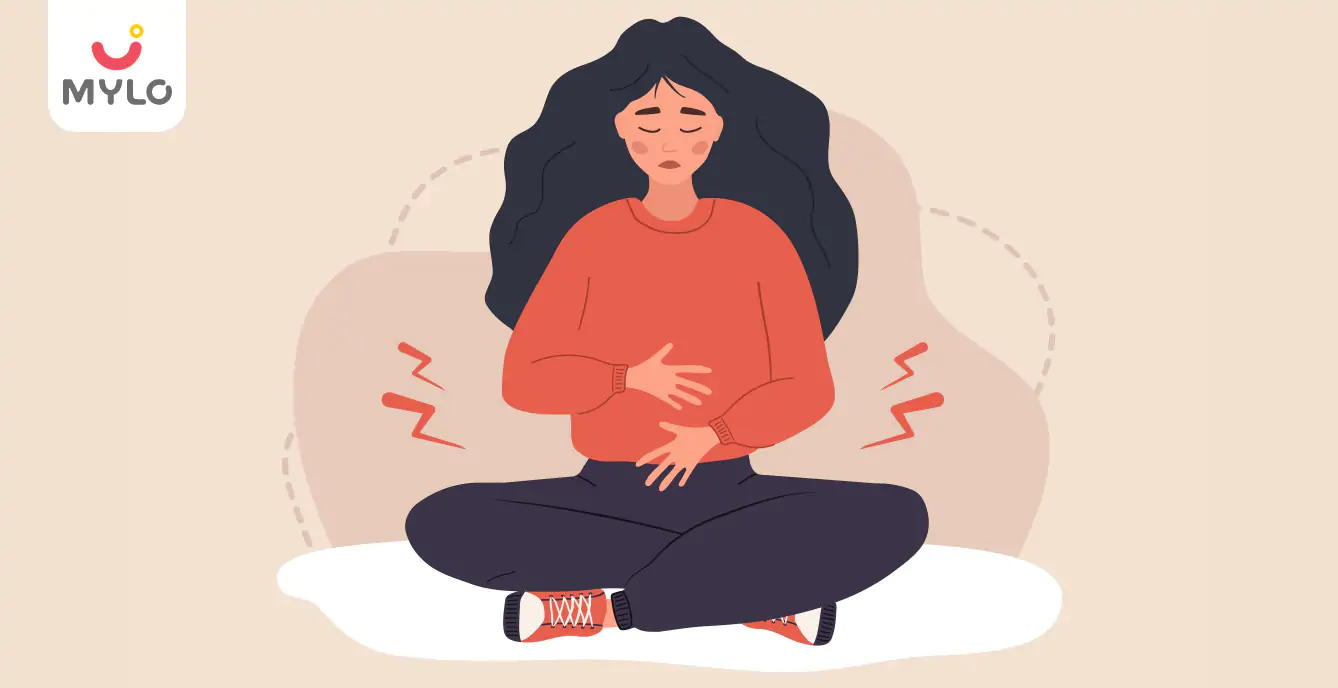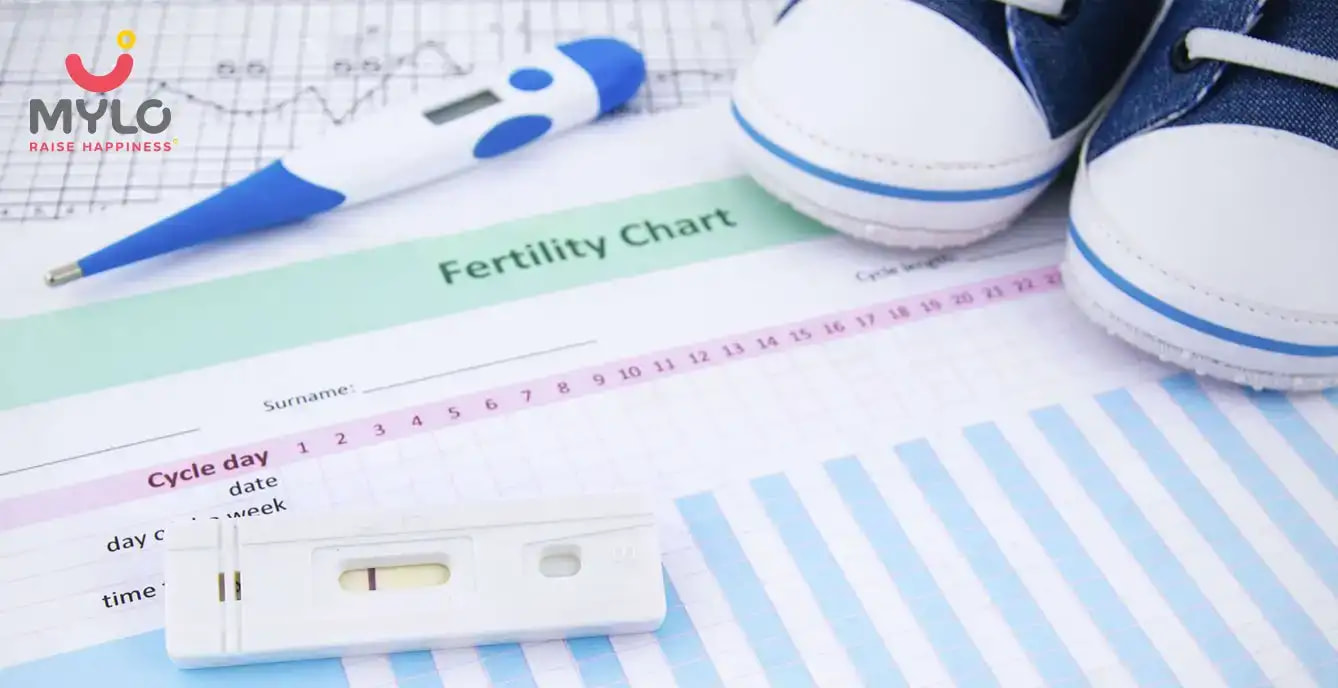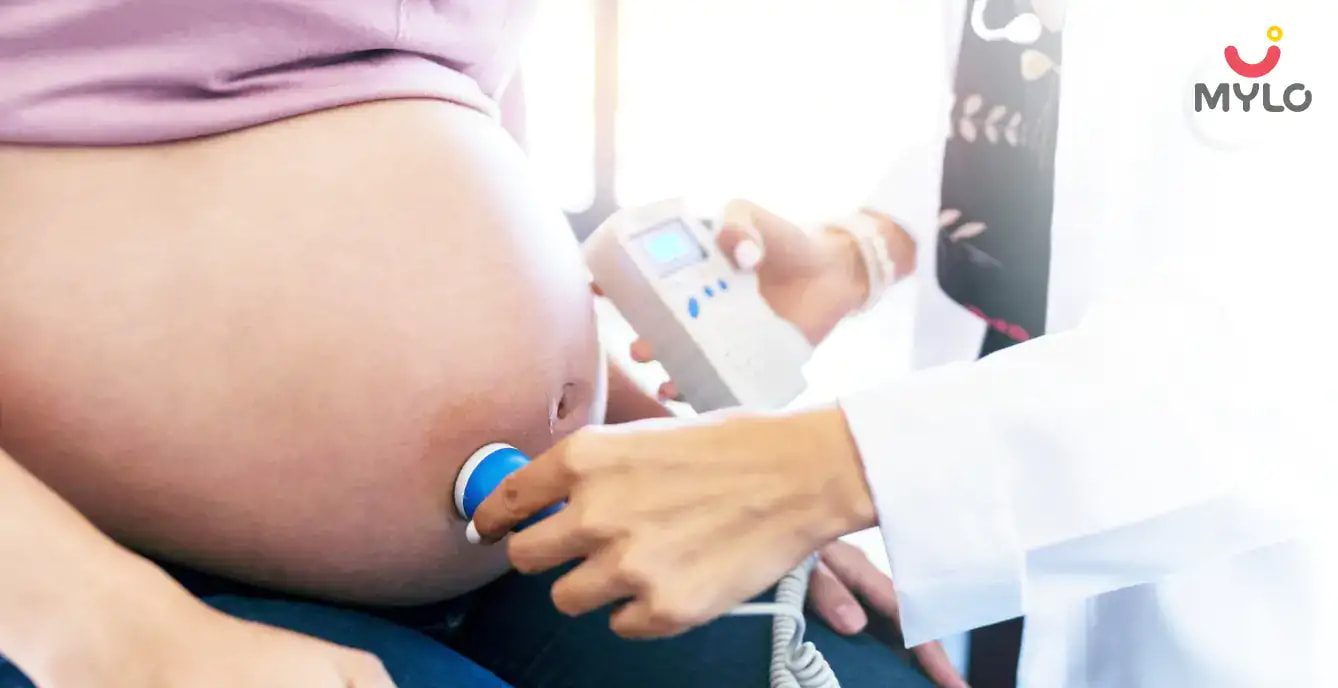Home

Basal Body Temperature: How It Can Help You Track Ovulation?
In this Article

Pregnancy
Basal Body Temperature: How It Can Help You Track Ovulation?
Updated on 7 December 2023



Medically Reviewed by
Kusum Sabharwal
Obstetrician & Gynecologist - MBBS| DGO
View Profile

Are you tired of relying on guesswork when it comes to tracking your ovulation? Well, worry no more because we've got an exciting solution for you - basal body temperature! If you've never heard of it before, don't fret. In this article, we'll delve into the basal body temperature method and how it can revolutionize the way you track your ovulation.
Basal body temperature meaning
When it comes to tracking ovulation, understanding your basal body temperature (BBT) is key. But what exactly does BBT mean? Your basal body temperature refers to your body's temperature at rest, typically measured in the morning before you engage in any physical activity or even get out of bed. This temperature can provide valuable insights into your menstrual cycle and help you identify your most fertile days.
What changes occur in the basal body temperature during ovulation?
During ovulation, your BBT experiences a subtle shift. Before ovulation, your BBT tends to be lower, usually ranging from 97 to 97.5 degrees Fahrenheit. However, after ovulation occurs, the release of the hormone progesterone causes your BBT to rise by around 0.5 to 1 degree Fahrenheit. This rise in temperature indicates that ovulation has taken place, and it's a sign that you have entered your fertile window.
Is there any change in basal body temperature when pregnant?
If fertilization occurs and you become pregnant, your BBT will remain elevated. Instead of experiencing a drop as you would during a typical menstrual cycle, your BBT will remain consistently higher.
This sustained increase in temperature is due to the ongoing production of progesterone, which helps maintain the pregnancy. Monitoring your BBT can be an early indication of pregnancy and can help you confirm if conception has occurred.
Basal body temperature method: How to check basal body temperature
Tracking your basal body temperature is a simple process that can provide valuable insights into your reproductive health. Here's a step-by-step guide:
1. Choose a reliable basal body temperature thermometer
To accurately measure your BBT, it's essential to use a dedicated basal body temperature thermometer. These thermometers are designed to provide precise readings and often have features like memory recall and backlighting.
2. Measure your temperature consistently
Take your temperature at the same time every morning, before getting out of bed or engaging in any physical activity. The consistency of your measurements is crucial for accurate tracking.
3. Get adequate sleep
Get at least three hours of uninterrupted sleep before taking your temperature. This ensures that your body is at complete rest, which is crucial for obtaining accurate readings.
4. Record your temperature
Keep a chart or use a mobile app to record your daily BBT readings. Make note of any significant changes, such as the rise in temperature after ovulation.
5. Identify patterns
Over time, you may notice patterns in your BBT chart. These patterns can help you predict when ovulation will occur in future cycles and plan for conception or contraception accordingly.
You may also like: What is the importance of measuring basal body temperature during conception?
How to maintain a basal body temperature chart?
Understanding how to check basal body temperature and maintaining a BBT chart is essential for effectively tracking your ovulation and reproductive health. Here are some tips to help you keep an accurate and informative chart:
1. Use a dedicated BBT chart
You can find printable BBT charts online or use a mobile app specifically designed for tracking basal body temperature. These charts often include spaces for recording additional information, such as cervical mucus consistency or the presence of any other relevant symptoms.
2. Be consistent
Take your temperature at the same time every morning, and record it promptly. Consistency is key to accurately identifying patterns and shifts in your BBT.
3. Record additional information
Alongside your temperature readings, make note of any additional information that may be relevant to your fertility tracking. This can include changes in cervical mucus, abdominal discomfort, or any other symptoms you may experience throughout your menstrual cycle.
4. Seek professional guidance
If you have concerns about your BBT chart or are having difficulty interpreting the data, don't hesitate to seek guidance from a healthcare professional or a fertility specialist.
You may also like: Ovulation Kit 101: A Beginner's Guide to Tracking Fertility & Maximizing Your Chances of Conception
What are the causes of increased basal body temperature?
While it is common to observe an increase in your basal body temperature during ovulation, there are some circumstances where it might be elevated for other reasons. Here are five potential causes of raised basal body temperature:
1. Infection or illness
When your body is fighting off an infection or illness, it can raise your basal body temperature. This increase is often temporary and returns to normal once the underlying condition is resolved.
2. Stress or anxiety
Emotional stress or anxiety can also affect your BBT. Elevated levels of stress hormones can cause a rise in temperature, even if ovulation has not occurred.
3. Thyroid dysfunction
An overactive or underactive thyroid can disrupt your hormonal balance, potentially leading to an increase in BBT. If you suspect thyroid dysfunction, it's essential to consult a healthcare professional for proper diagnosis and treatment.
4. Certain medications
Some medications, such as certain types of antidepressants or antihistamines, can cause an increase in BBT as a side effect. If you're taking any medications and notice an unusual rise in temperature, consult your healthcare provider.
5. Recent exercise or physical activity
Intense physical activity or exercise can temporarily raise your BBT. It's important to take this into account when tracking your BBT and consider the timing of your workouts in relation to your temperature measurements.
You may also like: Ovulation Calculator: A Guide to Maximizing Your Chances of Conception
Final Thoughts
Tracking your basal body temperature can be a powerful tool for understanding your menstrual cycle and identifying your fertile days. By consistently monitoring and maintaining a basal body temperature chart, you can gain valuable insights into your reproductive health, whether you're trying to conceive or practicing contraception. Start charting your BBT today and take control of your reproductive journey.
References
1. Steward K, Raja A. Physiology, Ovulation And Basal Body Temperature. (2023). In: StatPearls [Internet]. Treasure Island (FL): StatPearls Publishing
2. Moghissi KS. (1976). Accuracy of basal body temperature for ovulation detection. Fertil Steril.





Medically Reviewed by
Kusum Sabharwal
Obstetrician & Gynecologist - MBBS| DGO
View Profile


Written by
Priyanka Verma
Priyanka is an experienced editor & content writer with great attention to detail. Mother to an 11-year-old, she's a ski
Read MoreGet baby's diet chart, and growth tips

Related Articles
RECENTLY PUBLISHED ARTICLES
our most recent articles
Ovulation
Ovulation Pain: Is It Normal or a Cause for Concern?

Diet & Nutrition
Special Home Remedies For Gas During Pregnancy

PCOS & PCOD
PCOD Problem After Marriage: Debunking Common Misconceptions and Finding Solutions

Ovulation
White Discharge After Ovulation: A Normal Occurrence or Cause for Concern?

Ovaries
Normal Ovary Size: How It Varies and What It Means for You

Festivals & Celebrations
2024 Calendar with Holidays and Festivals of India
- After-Abortion Sex: A Guide to Physical and Emotional Wellness
- Cervical Cerclage: A Closer Look at the Procedure and Its Benefits
- The Ultimate Guide to Panchatantra Stories for Kids
- Which Is Better Normal Or Cesarean Delivery
- How to Get Baby in Right Position for Birth?
- Paheliyan 101: Riddles for Kids That Educate and Entertain
- The ABCs of Cephalic Presentation: A Comprehensive Guide for Moms-to-Be
- The Ultimate Guide to Consuming Chia Seeds in Pregnancy
- Essential Tips for Normal Delivery After Cesarean
- Crab During Pregnancy: Benefits, Risks and Smart Choices
- Normal Delivery Tips: An Expecting Mother's Guide to a Smooth Childbirth Experience
- Top 10 Panchatantra Stories in English You Must Read to Your Children
- What Helps in Improving Mental Health of Women
- Childhood Disorders: Meaning, Symptoms & Treatment


AWARDS AND RECOGNITION

Mylo wins Forbes D2C Disruptor award

Mylo wins The Economic Times Promising Brands 2022
AS SEEN IN
















- Mylo Care: Effective and science-backed personal care and wellness solutions for a joyful you.
- Mylo Baby: Science-backed, gentle and effective personal care & hygiene range for your little one.
- Mylo Community: Trusted and empathetic community of 10mn+ parents and experts.
Product Categories
baby carrier | baby soap | baby wipes | stretch marks cream | baby cream | baby shampoo | baby massage oil | baby hair oil | stretch marks oil | baby body wash | baby powder | baby lotion | diaper rash cream | newborn diapers | teether | baby kajal | baby diapers | cloth diapers |








